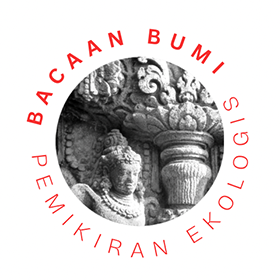John R. G. Djopari, Pemberontakan Organisasi Papua Merdeka (Revolt of the OPM), Jakarta: Gramedia, 1993. 180pp. RRP: Rp 7,000 (approx. AU$4.00 in Indonesian bookstores).
Maj.-Gen. Samsudin, Pergolakan di Perbatasan - operasi pembebasan sandera tanpa pertumpahan darah (Border Troubles - bloodless operations to free hostages), Jakarta: Gramedia, 1995, 463 pp. RRP: Rp 15,000 (AU$8.50).
Reviewed by Gerry van Klinken
After four and half months, the hostage crisis in Irian Jaya was resolved with military action. Two hostages died, as did more than two dozen combatants on both sides through accidents or battle. It is important to grasp the longevity of the political problems in the territory, which cry out for fundamental change. These two timely books, in their own way, do something to make us think there are Indonesians who realise this.
Samsudin's book is written in the genre of memoirs of heroic deeds. It recounts in detail his own role (with the rank of colonel in the Indonesian army) in resolving a series of hostage crises between 1978 and 1982. Besides illustrating that hostage-taking is almost a traditional OPM strategy, the story is remarkable because it takes pride in the fact that all the crises were resolved without shedding blood (except for the death of a helicopter crew in a crash).
The five different events ranged from the taking of the Abepura Military Region Commander to the taking of a large group of junior government officials and local workers. Some took as long as 8 months to resolve, by means of trusted civilian mediators. There are many fascinating photos.
OPM
Djopari's book is thinner, yet more substantial. It is only the second full study on the OPM to appear in Indonesia. The first was done by Nazaruddin Sjamsuddin, who also supervised this one. Djopari comes from Irian Jaya and teaches at the Interior Ministry's Institute of Government Studies. He travelled widely for this study and is remarkably open about his observations.
Both revolt and collaboration have always been matters for a small elite in West Papua. The Dutch who ruled the territory till 1962 recognised this, and so did the Indonesians. However, Indonesia's misfortune was that its economy was in such a shambles in 1962 that it could offer the Papuan elite nothing.
The Dutch had poured money into the territory in the late 'fifties and early 'sixties, making the Papuan elite feel, Djopari says, 'as if they were not being colonised'. In stark contrast, Indonesians stripped the place bare, even taking to Java the aircraft steps from the Biak International Airport. Attempts to socialise the notion of Indonesian-ness failed dismally, Djopari notes, because the standard line that Dutch colonialism impoverishes the people just did not ring true.
Crude
In the absence of a soft pillow for the elite, the government resorted to crude intimidation by Ali Moertopo's Special Operations (Opsus). In the process it created a unity in dissent that may never have existed before.
As so often, the coloniser provided a vocabulary for the colonised. The name Organisasi Papua Merdeka (OPM, Free Papua Organisation) was first coined by the Indonesian military. In reality, Djopari says, the OPM is 'not a single organisation for the liberation of Irian Jaya, but an umbrella for a whole range of resistance organisations both in Irian Jaya and overseas'.
Some will question the methods of this study - it is functionalist and thus uses too much communications theory and not enough economics. But it contains much valuable data, and deserves to be more widely quoted in Indonesia today.










